#worlbuilding
Text
I'm still so proud of this

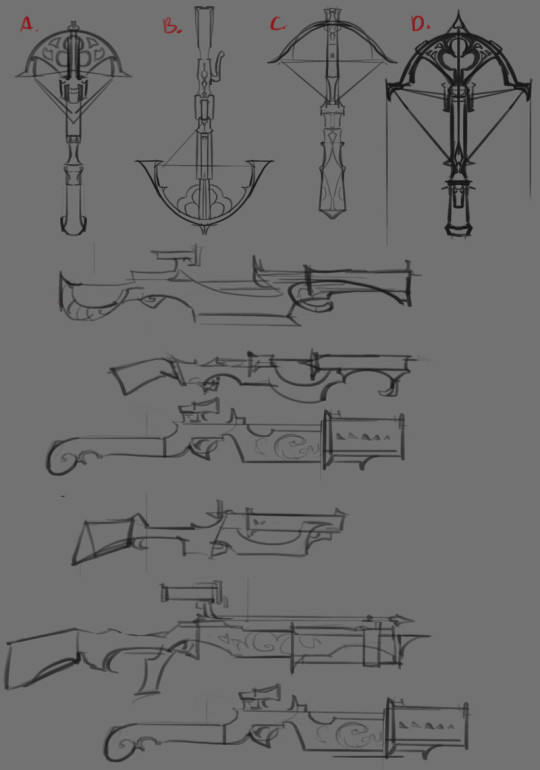
Do u want me to design weapons or props for ur ocs or worldbuilding? uwu im planning on starting to take prop commissions hehe
#dnd conmissions#dnd oc#dnd today#dnd#dnd stuff#prop#prop design#concept art#weapon design#art#commission#magical girl#instrument#bard#warlock#magic weapon#pact weapon#fantasy#worlbuilding#visual development
2K notes
·
View notes
Note
FUCKING TELL US ABOUT THE COPPER INLAYS
OKAY BEAST CALM DOWN HERES AN INFOGRAPHIC THING I HOPE THIS FEEDS YOU WELL

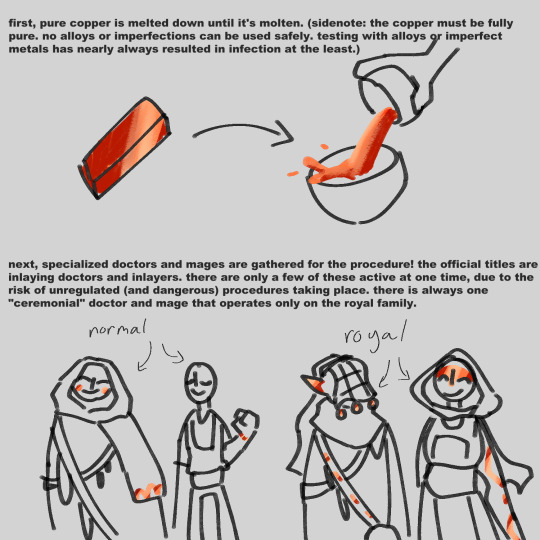
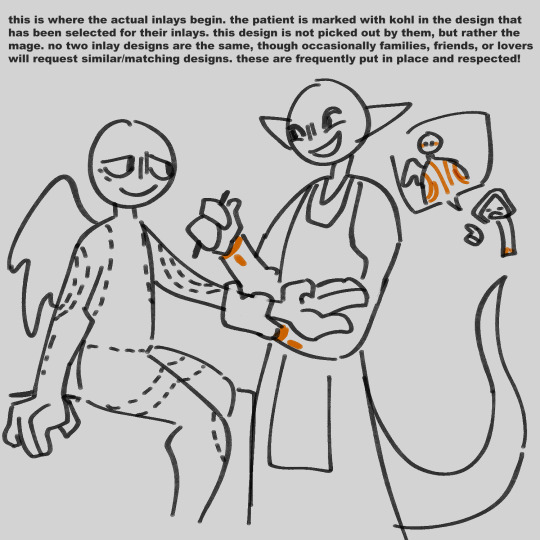

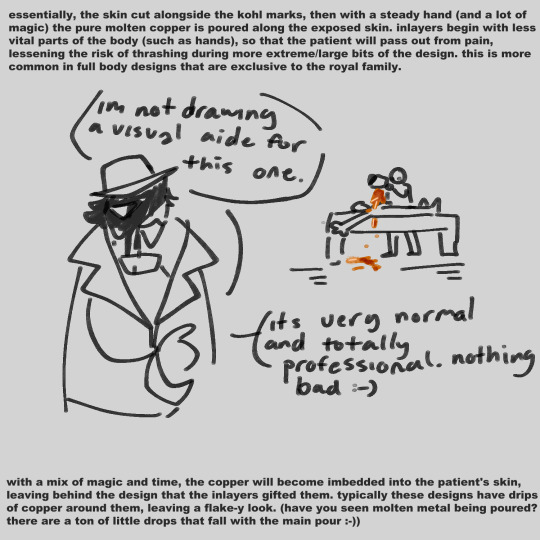
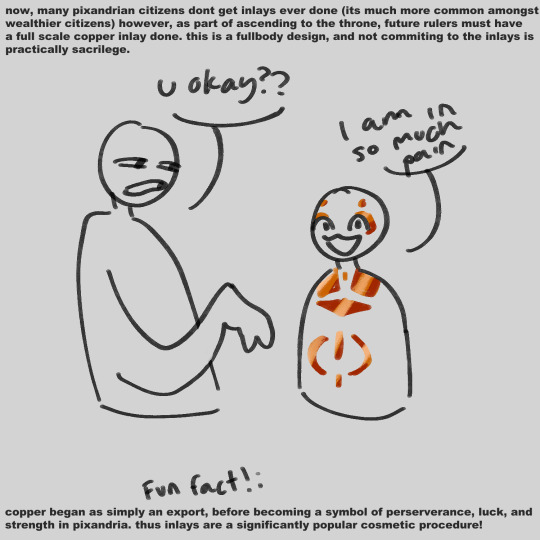
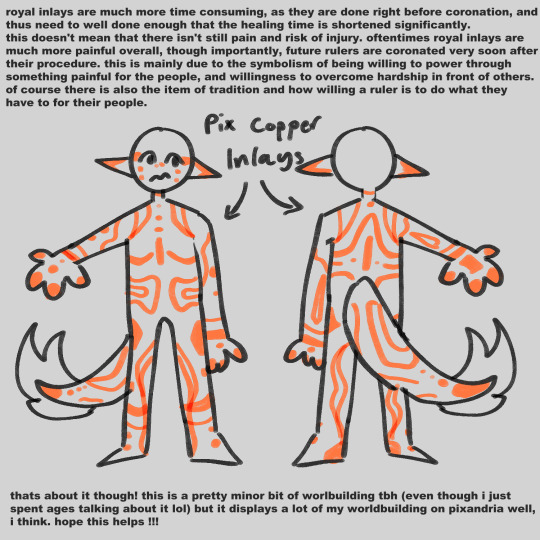
#am i maintagging this#yeah#pixandria#worlbuilding#pixlriffs#SO !!! thats what the designs i have on his skin r#and im an immortal pixlriffs believer so . they end up oxidizing as he forgets how to care for them#which is what the teal on his s2 design is :thumb:#im actually insane about this concept btw#even though it is#an insanely small bit of worldbuilding ive done#lmao#its cool though i think#i could go more in depth with other pixandria ideas if anyone wants :-)#my art
182 notes
·
View notes
Text
Chirper and Manuul cooking a Camptoscelid, poor thing tripped into the pot, spearhead looking on in confusion

Manuuls belong to @arkelyon , scelids to @marsandjupiter, and Spearheads to @asterotyto
#creature#creature design#alien species#xenobiology#spec evo#spec bio#original art#speculative evolution#the chirpers#speculative biology#worlbuilding#cooking
176 notes
·
View notes
Text

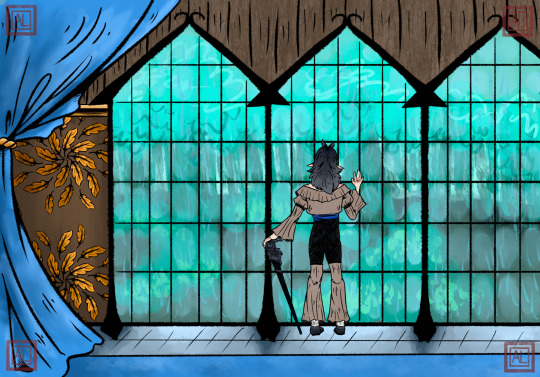
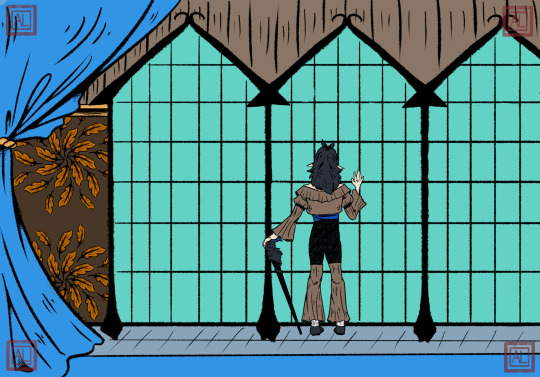

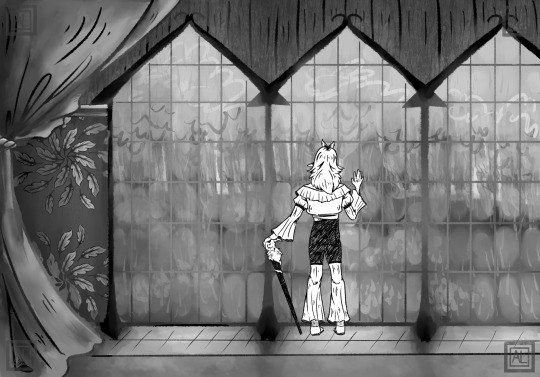
Scene idea for my House of Corvidae comic. I don’t really like the outfit that Hydrangea is in here but I do like the background wallpaper that took me a good several house I think.
#art#digital art#created by aloe li#house of crowva#house of corvidae#hydrangea crowva#black bill#rainy day#worlbuilding#concept art
10 notes
·
View notes
Text
Me and my nephew have been worldbuilding
here's his podcast to describe it
this is one episode so if you want to hear it all please follow his podcast and rate it
7 notes
·
View notes
Text


So- that's my first post huh.
Just some random OCs with horses, 'cause they are fun to draw (the horses, not the OCs)
#AtalanteArt#my artwork#oc art#oc#original character#oc artwork#digital art#illustration#oc lore#oc worldbuilding#worlbuilding#horses#horses are fun to draw#i don't know what i'm doing#first post#artists on tumblr#artist first post#art student#that's a lot of tags#fantasy
25 notes
·
View notes
Text
Flowchart-outlined skeleton history of the Swira (one of the nomadic barbarians who inhabit the steppe north of Tepat), viewed in mechanistic terms
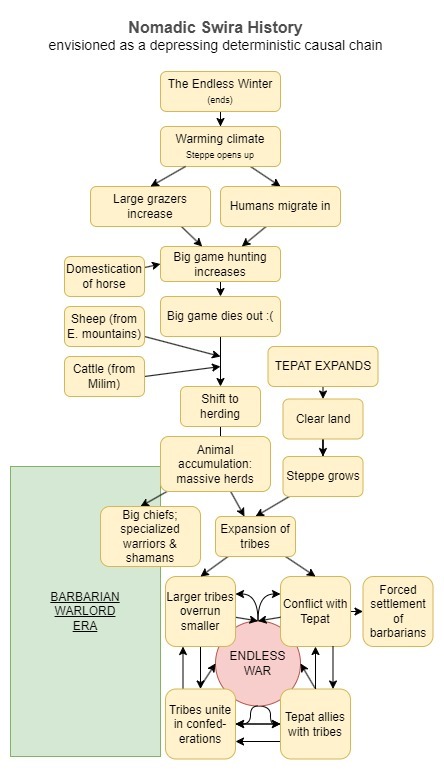
Flowchart created with draw.io
Still can't seem to get those connectors to not be screwy
9 notes
·
View notes
Text
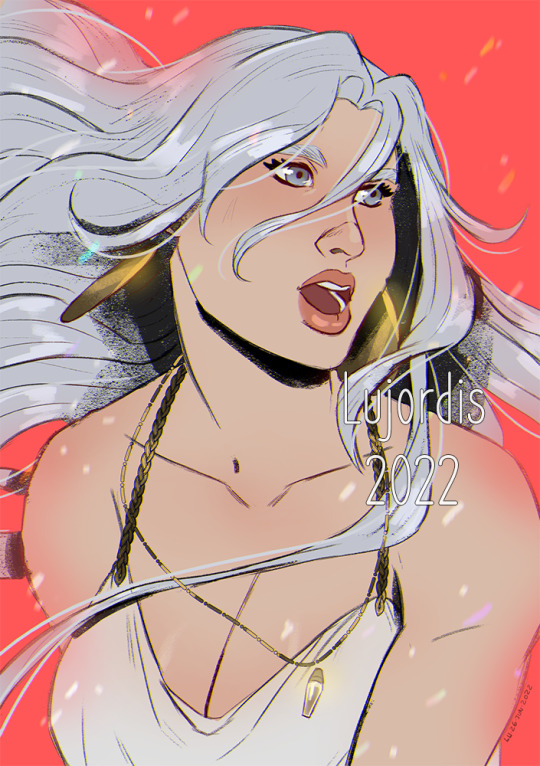
Not only a pretty face, Alethea is a light magic user and a former. Ready to kick her enemies ass.
#illustration#art#drawing#sketch#artists on tumblr#support artists#zarvllard#digital art#artist#my art#support#oc sketch#doodle#draw#original characters#original character#original art#original content#worlbuilding
19 notes
·
View notes
Text
It had been my intention for a while now to have the former Illuskan Imperial Capital, Kaeropol, be a ghost-storied ruin that was never able to be restored, only sometimes ventured into. Namely by Claimant State mercenaries, but sometimes others, to the end of retrieving proof or disproof of heritage. Not just blood heritage to ducal families or old imperial heroes, but also mercenary companies' imperial legion heritage. Of course, that isn't decided by blood so it's less about finding specific familial records and more about just taking a legion's writ of service and a minor degree of posturing at keeping said legion's traditions alive. This of course isn't mandatory for a company's success but it does lower a lot of hurdles on the political side of things. Really, no matter who you are, you're going to need old imperial records of some form or another if you want to make waves at the Ducal Council. There is, of course, also a fabulous amount of unretrieved wealth in the ruined City of Kings available for the taking.
Delving into Kaeropol is genuinely dangerous. Arcanists are generally of the opinion that some ancient misguided act of sorcery gone wrong is what ruined the city, killed its population, and continues to curse the remains. The reality is that after his slaughter in Heaven Meleor forged his first angel, his Archon of Death, Makatheo. The first command Meleor issued to him was to descend upon Kaeropol. To slay its people from the greatest to the least, in the streets and in their homes, and bar their souls from divinity. So Makatheo fell upon the city and flayed its inhabitants' bodies from their souls and bound them within its walls. There they have stayed since, lashing out in pained madness against each other and against the living should they trespass upon the restless grave of the former capital.
It was also my vague intention that the damnation that Meleor visits upon those unworthy to enter into Heaven take the shape of endless toil. Eternally building monumental reminders of their moral failings at the behest of Meleor's harrowing angels.
It's now my thinking that the latter should play into the former. All damned souls are sent to Kaeropol and eternally excavate a great, labyrinthine temple of penance beneath the city's foundation. Eternally breaking their backs digging out stone, carving ornate structure, and shaping idols to their own suffering. Heads and limbs clasped in contraptions of iron as ornate as they are cruel. Men who have rejected Meleor, or simply never had the opportunity to accept The Iron Truth toiling side by side with the Satyrs and the Dagon whose damnation is inexorably intertwined with their being.
And so those that would brave the City of Kings must endure not just their competitors, nor simply the madmen and perverse eccentrics who are nurtured by the bones of the old empire, but as well the harrowing presence and horrific violence of souls half-coupled to the living world. But to endure the terrors of Kaeropol is to lay claim to the power and wealth buried beneath the rubble. And for those keen enough to find passage and foolish enough to take it there are arcanists, historians, and collectors eager to possess the treasures of the damned and with much to exchange in return.
#Worlbuilding#I should probably try not to drift into an authorial voice when I'm just writing down worldbuilding ideas#But it's fun
6 notes
·
View notes
Text
Clans in Naruto
The worldbuilding in Naruto is unfortunately very sparse and kinda patchwork in a lot of aspects. We know that the villages are essentially dozens of clans banded together to become a bigger picture and there are even certain hierarchies among the clans, what with there being 4 noble clans (Akimichi, Aburame, Hyuuga and Uchiha) yet we never once get like an indication that the first two are anything special.
The Akimichi kinda makes sense because I think it was said that historically the Nara and Yamanaka clans were sort of retainers, and they've had this historic alliance, but whatever such hierarchy existed between them definitely doesn't in the present day, because all Nara are apparently high IQ leaders whose big brains definitely make for the best commanders, so if there is a leadership position in that alliance, it is definitely the Nara. Also, the Sarutobi are involved somehow, what with the giving the earrings thing, but I am not sure if this tradition predates Konoha or not, because they said it happens when they make chunin which is not something that existed before Konoha did.
It's interesting, and a bit frustrating because I don't think we are sure what that means? Like, you can see the synergy and reason for the Akimichi-Yamanaka-Nara alliance, and sure, more people in the alliance makes it stronger, but what exactly is the role of the Sarutobi there? Why did those three clans grant the Sarutobi this ceremonial but elevating duty? What is the connection there and how did that evolve? It's fun to speculate as a fan, and it's true that we don't really need this information for the story, but I have to say, I personally would have been more interesting in the whole clan history than the bunch of dimensional aliens the story later threw at us.
As to the maybe prominence of the Akimichi, you can hazard a guess, of course. Generally speaking the Akimichi are the physically strongest fighters, so strictly speaking, that might have given them the more dominant position, but then again, the Naruto world tends to have quite a few "geniuses" who are so much stronger than everyone else that a clan just needs to have one or two of those, and the overall strength of the clan doesn't matter all that much in comparison. I guess the Nara or Yamanaka never really had that, so they remained the support and enablers for the Akimichi to deliver devastating attacks.
And I don't super mind that, but I kinda wish the clans would be explored more. What makes the Aburame a noble clan, for example, and how come the Senju don't make the cut for noble clan? Especially seeing Uchiha and Senju were the two strongest clans and the founders, with the first two Hokage being Senju.
I guess the implication being that the Senju all died out eventually but a) how did that happen anyway and b) surely the noble clan stuff is not a recent thing, so when Konoha was founded, there were enough Senju alive to constitute a clan, especially seeing that Hashirama and Tobirama were around, so what disqualified the Senju from noble clan status?
The Hatake are a clan, but as far as we knew, the most amount of clan members they had were two. I don't think a single person constitutes as a clan, especially one that has been disgraced for so long as the Hatake were, but at least they had been a clan.
So now that I have learned that there is a Lee clan, with Rock Lee and his son, I'm not sure what a clan even is, anymore. What is the difference between a clan and a family? Because I would have assumed that a clan necessitates a certain size, at least at some point in history. Then there are traditions, techniques, and even bloodline limits, and while Lee can start a tradition or techniques to pass down on, I feel like to proclaim you and your son a clan feels a bit hasty.
I do find the notion interesting that despite banding together in a village, quite a few clans seem to have been depleted to single individuals when they maintained large numbers in the Warring Clans era.
The Senju had been in an all out war with the Uchiha for generations and with dozens of other clans, and the maintained hundreds of family members. But the second they formed Konoha with the Uchiha and many other clans, the Senju were reduced to one person who was in her 50s within two generations. And that was with the first two Hokage being Senju and the third being a Senju student.
What happened there?
Now, you can again theorize. I liked the fan theory that it was kinda Tobirama's unintended fault. That by making it so that the Uchiha were the police force within the village, which distanced them from the village population who viewed them as the unpopular cops who couldn't really earn glory and fame on the battlefield as almost all of them were stuck in the village, it also protected them from dying on the battlefield.
And it wasn't like there weren't any wars or fighting, so the Uchiha, their strongest fighters next to the Senju, were stuck in the village and couldn't go out and meet the strongest enemies in battle, so the Senju had to pick up the slack and more of them died until they couldn't maintain an active population anymore and none of the Hokage who definitely had their best interest in mind noticed or were able to do anything about it.
So the plan worked in that it alienated the Uchiha from the village and curbed their power, but it also was an abject failure because it resulted in the very thing Tobirama wanted to prevent, the deaths of his clan members.
That is of course just a theory, but it kinda rings true to me.
Not going to go into the Hyuuga now because nothing makes sense about them except the fact that they were designed to suck.
But yeah, I wish the clans were explored more, that we got a bit more about their histories and maybe like, that more of them have goals and ambitions beyond just protecting the village. Or that we learned how some clans still have hundreds of members while others have been completely decimated even though the village framework should have prevented that very thing.
Sorry, was a bit rambly and all over the place.
11 notes
·
View notes
Text
MAPS COURTESY OF THE WORLDBUILDING OF @twinkpsychopomp
DETAILING TO START:



EASTERN CONTINENTS:
VEMETIS:

COIHL:

WORYNHUN:

MALAHASA:

WESTERN CONTINENTS:
THE DAWNLANDS:



SOUTHERN CONTINENTS:
KO MAHOS:
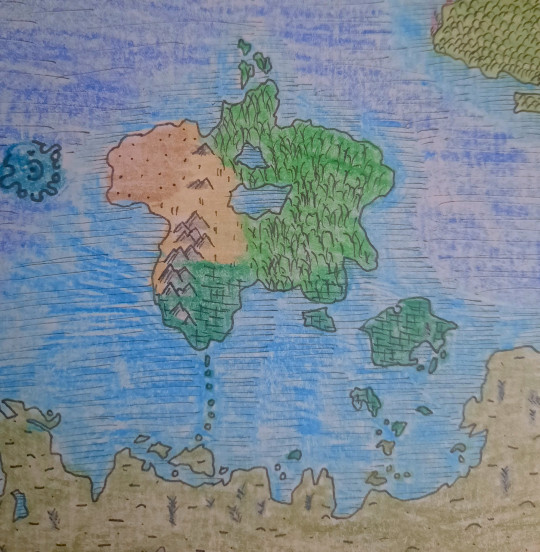
AUROUROUA:


12 notes
·
View notes
Text
Species Lineup

Click for better quality!
A simple sketch lineup of all the species (and subspecies) from my project! From left to right they are "Sentinels" and Ferenids (two closely related subspecies), Ambinids, Creonids, Syrthryms (Creonids are a subspecies of Syrthrym that were partially genetically modified to better suit their environment), [Sophont #5], [Sophont #6], [Sophont #7], and [Sophont #8] (Most of them are relatively new so they don't have names yet).
The first five listed are from Riadophaes, a water based planet with large amounts of landfast ice and very little land, as well as aquatic megaflora floating in the open ocean. Riadophaes orbits Firistan, a K- Type [Orange Dwarf] star with a temperature around 4,350° Kelvin. The system in which Riadophaes is located is known as the Ferei System.
Sophont #5 is from Hsriaeh, the dry moon of a large gas giant, covered in large ravines in which dense forest like vegetation grows from the sides.
Sophont #6 is from Uinm, the "temperate" gas giant around which Hsriaeh orbits.
Both Hsriaeh and Uinm orbit Kinavryi, an F- Type [Yellow-White Dwarf] star with a temperature around 6,600° Kelvin. Hsriaeh and Uinm are located in the Kyr System.
Sophonts #7 and #8 are from Seir, a tidally locked planet with small liquid oceans and relatively flat terrain, with dramatic mountain ranges separating parts of the planet. Seir orbits an M- Type [Red Dwarf] star, named Dea, with a temperature of about 3,200° Kelvin.
18 notes
·
View notes
Text

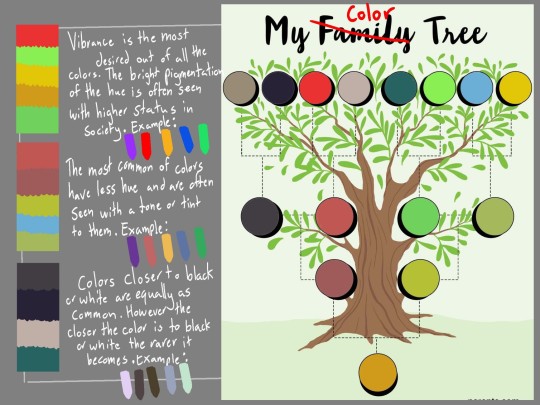

Part 1 of possibly many.
Have an idea for a story but would like feed back on idea
#digital art#random art#sketch#original art#concept art#original character#character art#oc artwork#oc doodles#worlbuilding
2 notes
·
View notes
Text
From Dust to Ashes - Vampire History
FDTA Masterlist
If you have questions about specific parts of vampire lore, feel free to send asks. I love talking about worldbuilding.
...................................
The first vampire was rumored to be truly immortal, that not even a holy ash stake to the heart could kill them, though no evidence of this vampire exists as of yet.
It is said that this ancient vampire, also known as Isut Jeoalt, created lesser vampires to serve him, giving his servants the power to create more of themselves. Vampires were not well known through most of history, living on the sidelines typically, picking off humans and hunting animals for their food.
We do know that vampires started working with human civilization around 3000 BC as vampires were hired by the early Pharoahs to hunt and kill the hippos that often disturbed their abilities to farm and travel. (See Esial's account)
Vampires and humans seem to have developed a beneficial relationship as societies grew and spread. There are records of Vampires being servants to the rulers of countries, acting as guards, assassins, spies, and healers in return for blood.
It wasn't until the Roman empire fell, sending the world into the dark ages that vampires became terrifying creatures of the night, "sent to destroy all of the humans." During this time, vampire fell on hard times and began to gather. This is when Covenistic traits began to appear in vampires as they could work together to find food, developing the ability to feed on each other and share blood to survive.
Because vampires began to gather together and develop the need for bonds with one another as they evolved, their fledglings no longer leaving the nest when they were old enough to do so, they were able to form something of a community. With the world in so much strife during the Dark Ages, the more powerful Vampire Sires began to rally the covens together to take the world for their own. Vampires quickly rose into power, with some families, such as the Blutfang and Atwood families, ruling over the lesser families. Most vampires continued in their roles of servitude, now serving under Vampire lords rather than humans ones.
Many humans became slaves during this time, and much knowledge was lost as the vampire lords destroyed as much of it as they could to make humans believe they had always been slaves to the vampires. They told humans stories about how they came into power and how humans were created to serve them by the mother of Isut Jeoalt.
When the black plague swept Europe, Vampires grew crueler towards humans as there were a great deal less of them in the area and they wanted to stay firmly in control.
Eventually, humans rediscovered a trove of greek and roman texts and the renaissance began, with humans slowly coming to realize they were not beholden to the vampires and, alongside discovering art and philosophy, discovered ways to kill the vampires that tried to hold them captive.
Vampire Hunters became fairly common, and children were taught how to slay the fanged ones from a young age. The vampires fell swiftly, after that, and vampires who could only feed on humans were quickly killed out. The vampires that could stay hidden and under the radar, feeding on animal blood soon became the majority, though they were still often hunted.
Vampires slowly became a nonissue and the world kept spinning. Vampires hid themselves as best they could, though when the great wars started, they came out of the woodworks, claiming to want to help and prove themselves. This was their bid to join society again, and it worked as they fought with their chosen sides until after World War 2.
Vampire hunters were still hunting vampires, now killing those who had not managed to get a citizenship in their chosen country or had fallen into the urge to drink the blood of the humans around them. The practice is abolished now, with the police taking the task of capturing feral vampires and putting them through fair trials.
Vampires still have limited rights, though there are many ongoing campaigns in motion to get them everything they need. They have the right to life and liberty, with people being jailed for killing or critically injuring a vampire or keeping them trapped in any way, shape, or form, though they do not necessarily have the right to peruse happiness. Those vampires who can have children are allowed to, though the laws for whether vampires can create fledglings is still in the courts. There are some allowances for finding someone one death's door and bringing them back as a vampire, though that is a case by case basis until it can all be sorted out.
Surprisingly, there are a fair amount of humans who want the fledgling laws to pass, which would allow a vampire and a potential fledgling to put in papers to be approved to turn the potential fledgling. There are many chronically ill and terminally ill people who desperately want another chance at life, though the laws around terminally ill children may be very muddy as they are not old enough to consent to being turned.
Still, the outlook seems well enough and vampires have integrated well into society, taking on jobs no human could or are reasonably considered too dangerous for humans to take care of, such as long deep sea operations and getting bodies and trash out of remote places such as mount Everest, as well as taking up their old jobs as bodyguards and soldiers.
Most notably has been the rise in Vampire scientists who can test dangerous items, such as radioactive materials, often living together in radioactive covens while they do so. There is a popular reality tv show 'The Juggernaut' centered around one such coven which has done a surprising amount to soothe people's remaining fears about vampires in recent years.
10 notes
·
View notes
Text
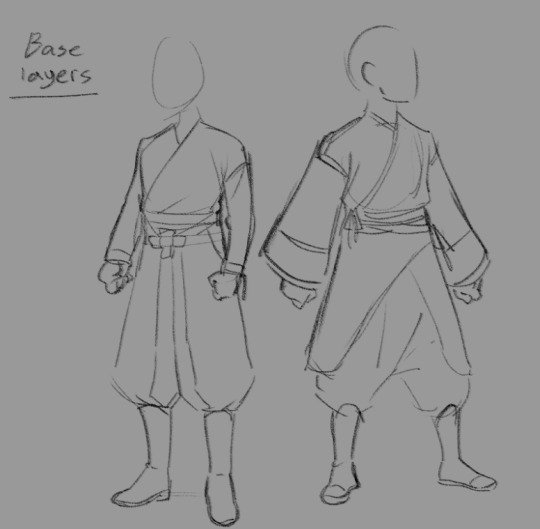
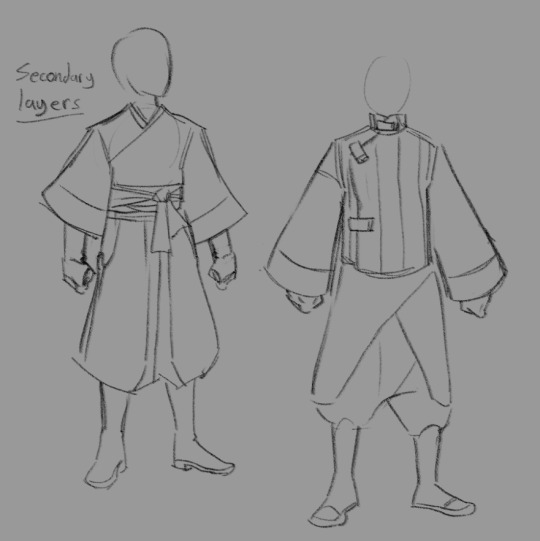

Sorry for the lack of comic update today. I had a bunch of schoolwork to do. Instead, have these ideas for clothing layers in Norjunn.
4 notes
·
View notes
Text
ARGONUS INFO: the Elkinets, an "advanced" guide
(NOTE: description copy-pasted from DA where i normally post my works. any context that is missing here on tumblr can be found on my DA [linked here and on pinned post] )
[this is a single image best view if opened in a new tab. the top image was the first formal post about them, before i actually started my argonus worldbuilding series]
[re-uploaded due to original being posted from main]
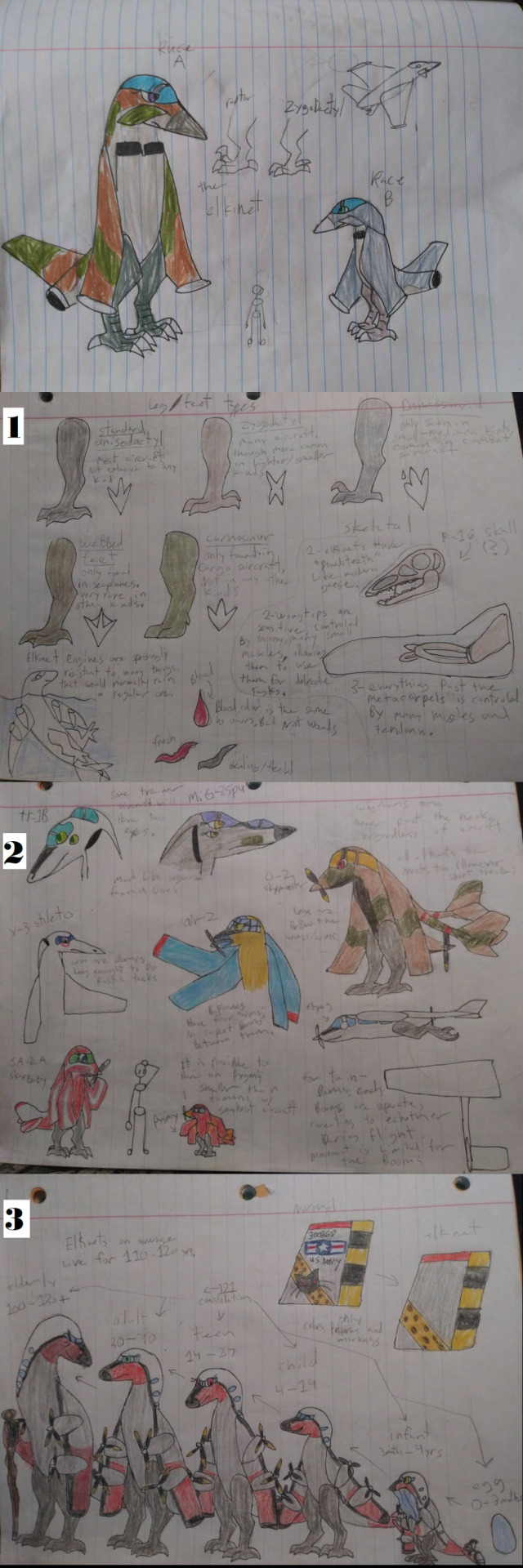
[tumblr edit: this guide is meant to be a "basic" guide to the elkinets themselves. obviously, because they represent airplanes and airplane-like drones, they come in such a wide variety. also, idk how the formatting is, so excuse any issues and mistakes. i also edited some grammar issues as well. ]
GENERAL BASICS elkinets, on the surface, look like your everyday generic aeromorph, that is a living aircraft with a humanoid shape (a rather "basic" one at that).
they have a clearly defined head, neck, body and tail. they stand on two legs, and the wings act as arms and hands when not used for flight. however, there are some things that separate them from other similar aeromorphs.
-excluding the engines (Later on that), they and the other aeronoids both have an entirely biological existence and an evolutionary background, being highly derived from argonus's early Psittacopasserae birds (parrots and passeriformes) during the late paleocene.
-the legs and feet aren't landing gear, rather they are much like that of birds and theropods, further reflecting on their evolutionary past.
-their skin is soft and leathery, not unlike that of a human's (kinda creepy, but whatever) it is, however, comparably the same thickness as our own.
-their cockpit / canopy / windows are purely aesthetic, having no real function. it is solid in color and made of skin like the rest of the body (they are often called "canopy/window integument")
-they have a skeletal structure not unlike other tetrapod's, alongside organs as well.
-there exist a dwarf / pygmy version of them, which occurs when there is a lack of natural resources.
now that's established some of the basics, we can get into the specifics of it. BODY SYSTEMS being a tetrapod, they have various organ functions, though here are listed some of the important one:
SKELETON: the skeleton of an elkinet is still similar to birds, but there are a few highly-derived parts of it. two major examples are the skull and arms. much of the skin covers the head like it would with the skull. it has lips to cover the "teeth", keeping them lubricated with saliva. these "teeth" aren't actually true teeth despite initial appearances. they are instead tomium (what geese have) that have the same function as canines, premolars and molars, covered in the same material as the beak. their incisors, however, are what's left of the actual beak they once had. both the beak and teeth constantly are growing, and while the process of mastication (chewing/grinding of the teeth) is often enough to keep them trimmed down, proper dental care is still required. the arms are also very derived from the original animal. everything is normal right up to the metacarpals, where we see the metacarpals small and atrophied. the metacarpal isn't completely useless, since it (alongside some cartilage) help anchor down the many muscles that make up the other half of the arm. just like modern birds, the bones are hollow. this allows them to stay relatively light in weight so they can much easily fly, but does raise the risk of injuring those bones. this is especially a problem with older, larger individuals.
MUSCLES: an elkinet's strength varies from aircraft to aircraft, but in any case they are pretty muscular regardless. the area with the most muscles are the half end of their wings. these muscles help move and control the rest of the wings, but more importantly they help manipulate objects. this is, obviously, because they have no fingers, so having those muscles are really useful for delicate task like writing. their legs are also pretty muscular, which is a given since they use them for getting around on the ground as well as taking off and landing. the tail stabilizers, canards and prop blades can also move around. those parts can move in a similar fashion to the wings, though more weaker and are often used as more of displaying emotions.
RESPIRATORY AND CIRCULATORY: while two different body systems, they go hand and hand together. -respiratory- the elkinets have a strong respiratory system. their lungs are large, having various air sacks to help with gas exchange. in addition, elkinets have re-evolves diaphragms. elkinets primarily breath through their nostrils, which can sometimes hide behind the engine intake if said engine is on the face. -circulatory- elkinets have a four-chambered heart, not unlike any other tetrapod. their blood is red, and so is a fresh wound. however, said wound then turns grey during the healing process (unless injury is permanent, then it stays gray). apart from where you'd usually find mass amounts of blood flow, the engines are also a major place for blood to go through, especially if being used in flight. the engines is always loosely connected to both circulatory and respiratory systems. when running, the engines can take in oxygen and puts it into the bloodstream. this is, however, not super effective since it only takes in 1/10 the amount than the lungs.
DIGESTION: contrary to what one may think, elkinets do not consume jet fuel, nor any kind of fuel, rather they eat actual food. elkinest are, for the most part, just as omnivorous as we are. they are capable of consuming both plants and meat, and have been domesticating animals and plants for food for many, many centuries. however, exactly which one they consume the most can vary. for example, larger aircraft may stick to a more vegetarian / vegan diet because plants are far more easier to produce and yield more food than animals. on the otherhand, some places don't have much land for growing crops, so they stick to eating mostly animals. and, of course, we cant forget about the various cultures and what they eat as well. since the elkinets have the tomium to help grind down food, they have de-evolved their gizzards as they serve no real purpose anymore. they do, however, still have a cloaca, the single hole on their butt that used for everything down their (waste + reproduction).
REPRODUCTION: i won't dwell on this too long since i don't like talking about it. all you need to know is that while their cloaca conceals their reproductive parts, they still have the usual reproduction organ that most other tetrapods have. they also lay eggs, like birds
PHYSICAL APPEARANCES & ANATOMY
now we head to the rest of the body and their physical appearances.
HEAD: like said with the skeleton, elkinets have a reduced beak that act as incisors while the tomium act as the rest of the teeth. but apart from that, what else is going on?
-canopy/cockpit: like said in the beginning, the canopy has zero function, at least by our terms. they do, however, serve as identifying features between individuals. the color of it will vary; most of the time it's some shade / hue of blue, but it can also be any color. the canopies' color always stands out from the rest of the rest of the body.
-eyes: eyes are rather human-like in shape, but the general style of them can vary. regardless, elkinets always have a clearly defined pupil and iris. and they come in a wide variety of colors (another way of identifying individuals). in very rare instances with trainer aircraft (particularly ones with separate canopies), the elkinet may have four eyes, much like the other argonian fauna. it's unclear why it's specific to trainer aircraft and not other kinds.
-ears: the one thing that remains consitant with the rest of argonian vertbrates are their ears; they have four earholes, which are covered by a flap of skin akin to an earlobe. they are desgined to protect their hearing durring flight.
-fangs: sometimes the canine part of the tomium can stick out of the mouth. these are usually small and dont create much of an issue.
NECK & BODY all elkinets have a neck, however short they may be. the neck and spine are very flexible, and the neck can turn a near 180 degrees. when standing, the body creates and S-like shape. although they may look top-heavy, they're center of gravity is actually around the pelvic region (Often helped with the tail), so they don't constantly fall over.
ARMS / WINGS the "hand" part of the wing is called the "paw", and in spite of it's shape it is extremely dexterous. alongside the muscles at the wingtips that control the appendage, the paw's underside (their "palms" so to speak) are as soft and sensitive as our fingers. the palms, as well as the underside of the paw in general, are also covered in setae (same stuff some geckos have), which they can control to hold / drop items. this allows them to hold smaller objects without moving much of the wingtip's' muscles. the length of the arm, regardless of aircraft, is always long enough to do basic arm stuff (grab, stretch etc.). they are also never past the neck of the elkinet, and are always directly connected to the body around the chest /abdomen area. in the multiplanes (biplanes, quadplanes, ect), there are no support beams between the wings, and as expected those extra wings will also function as arms.
LEGS AND FEET the legs of the elkinet are directly underneath the wings. although no longer needing to live in the trees like their passeriform relatives, most elkinet feet still are still capable of and used for perching and grabbing onto stuff. with some of the longer-winged aircraft, there comes longer legs to keep the wings from dragging onto the ground. the colors of the legs are always greyish in color, though can have a little tint to them. there are five major feet types when it comes to variations:
-standard anisodactyl: one of the most common leg types, all aircraft can be born with anisodactyl feet. these kinds of feet are not exclusive to one aircraft type, though sometimes they're more rarer in some types of aircraft than other.
-zygodactyl: another very common and non-exclusive feet type, these kinds of feet are more common in the smaller and lighter aircraft, especially in civilian and non-combat aircraft. some elkinets use zygodactyl feet to hold and manipulate objects, much like parrots do with their feet. skiplanes have a unique variation of this foot type that's semi-palmate (partially-webbed).
-dromaeosaurid: heading to the more exclusive kinds of feet, the dromaeosaurid feet (also known as raptor feet) are only seen in the small and medium-sized aircrafts. they are especially common in combat aircraft like bombers and fighters. although tipped with a large talon, rarely is the big toe ever used in combat outside of the military.
-webbed: while these feet are often in the shape of you average palmate (Like ducks and geese), they can also take the form of lobate feet (Like grebes and coots). they are exclusively seen in seaplanes and very rarely in other types. curiously enough, those rare times are often in navy and coast guard aircraft. as expected, these provide better mobility in water.
-carnosaur: of all the feet types, this is the only one that is incapable of perching or grabbing due to a heavily reduced rear toe. these are only found in transport aircraft and no other kinds have them. they are especially common in some of the biggest and heaviest of them.
TAIL beyond with flight, the tail also serves as a balancer to keep elkinets on their two legs. the tail is flexible and capable of moving around. the tail can be used as an indicator of emotions; an example is their tail swaying side to side. this is typically associated with being happy or content. all elkinets have a tailbone and some form of a tail. the twin-boomed aircraft are very interesting, in that their tail is boneless and part of the arm. each boom is separated from each other, allowing them to move independently. when in flight, however, they are held together by setae, same thing on the wingtips. they are limited in movement, however, and are primarily controlled by the base of the boom.
SIZE AND HEIGHTS from nose to tail, a normal elkinet is around the same lengths as their aircraft counterparts. however, that is not always the case; elkinets also have a pygmy version of them. pygmies are half the size of a normal elkinet, and come into the world of two way; being born by pygmy parents (Most common) or being born from a normal elkinet (very rare). the latter occurs when there is a lack of natural resources (water, food, etc.). this has, historically, happened on island and island continents, but in modern time it became prevalent in places of poverty. apart from the size, they're about the same as a normal elkinet. sometimes, especially with some of the smallest aircraft, pygmies can be smaller than humans. with individuals, however, there are some variations in size much like us. some individuals of the same age and kind can vary a little bit. this is especially in females, since they tend to be slightly larger than males.
GENDER DIMOPHISM female and male elkinets look almost identical, though there are some external giveaways to their gender.
-females: females, like said previously, are slightly larger than males. in addition they'll have some much fuller eyelashes, and often have a slightly more curved chest than the males (of which is mostly fat)
-males: the almost opposite, males are slightly smaller, with a flat chest and less full eyelashes (or in my drawing style no eyelashes).
[tumblr edit: later on, i would call males "toms" and females "sheplanes". also, yes, i know, typical "girl vs boy" anthropomorphisation. come complain to me..]
COLORS AND LIVERY contrary to our aircraft, elkients do not have any obvious letters, numbers or symbols as part of their liveries. they only have colors, patterns and markings (seen on last image). at most they'll have markings that very, very vaguely look like said symbols. the closest thing to having those as part of their livery is if it's tatooed on, otherwise it is worn as some form of clothing or accessory. while most of their livery is based on their real-world counterpart, they practically can have any kind of colors and liveries.
GENETICS & HYBRIDS
all elkinets are part of the genus aeros, and because of how closely related different kinds are, there is indeed a possibility to get a hybrid. between different aircraft, hybrids can vary from uncommon to very rare. in all cases, hybrid elkinets are usually a mix-and-match thing, having certain physical attributes greatly resembling one parent than the other, the most common of which is being one parent' species and the other's colors/livery. sometimes, though, other body parts can be taken into account like head, body, tail, engines, etc etc...however, there is more at play than just having the parents be two separate species. see, what comes out depends on the size difference between the parents. usually, the rule of thumb is that the smaller the mother is compared to the father, the more likely it is the baby will be the mother's species. here, i have a set of examples (disclaimer, I'm horrible at percentages):
if the mother's smaller than the father, it's the following statistics: -60%-90% chance of baby being mother's species -30%-5% chance to be father's species -10%-5% chance of baby being hybrid
if father's smaller than the mother, the statistics are swapped: -60%-90% chance of baby being father's species -30%-5% chance of baby being mother's species -10%-5% chance of baby being a hybrid
if both parents are close to or of exact same size, then it's different: -35%-40% chance of baby being father's species -35%-40% chance of baby being mother's species -30%-20% chance of baby being hybrid
of course, this is if the baby is conceived naturally. though, in the more modern age, parents can instead go to specialist to have their baby artificially conceived. the most common way of doing this is having a fertilized egg sit in an artificial "womb" until it developed into a more proper elkinet egg. these artificially conception creates the same chances of what comes out as if the parents were of same size. this method, however, is pretty costly and does require the two parents to go through paperwork and make sure that they're capable of taking care of the child.
ENGINES AND FLIGHT just like real-world aircraft, elkinets are fully capable of flight. however, their flight is pretty different than our aircraft.
ENGINES: the elkinets fly primarily with their engines. the engines are near-identical to our non-living aircraft, having the near same mechanisms and what not, particularly the insides of it (fanblade, compressors, turbines, ect). however, the materials are actually partially-biological, having keratin make up at least 30% of those part. this makes elkinets (alongside all other aeronoids) one of the very few times a biomechanical organism has evolved naturally. another thing that sets the elkinet's engines apart from normal aircraft is how resistant they are. things that would normal damage or strait up ruin an normal engine (water, debris, ect) have little to no effect on the elkinet's. their engines (if on the wings) are also firmly attached to the arms via cartilage, so it would take significant force or trauma for them to come off. however, the insides of the engines are also pretty sensitives, and they definitely would feel debris if it was caught up in there. thankfully the debris usually will comes out by itself with a few start-ups.
FLIGHT IN GENERAL: elkinets take off by having their engines at near-full power and either launching themselves into the air or getting a brief running start. once they've got air, engines go into full power and they fly off. regardless of what aircraft they are or the type of engines they got, all elkinets fly at the subsonic speeds of 200-210 mph (dependent on respective aircraft/engine types). since elkinets have no flaps or speed brakes, they usual stop/slow down by positioning themselves so that they reduce their speed (Much like what birds do when they come to land). elkinets will even deploy reverse thrust if they need to further slow down. like that famous saying from Issacs newton goes "what goes up must come down", and that stays true for the elkinets. for one, flying itself can burn alot of calories, especially if the engines are constantly running. another thing that limits the amount of time in the air is the fact that they have to hold their arms / wings strait out. while they have evolved to hold their arms out for long periods, they cant hold them out forever. in addition to normal flight, all elkinets are capable of gliding as well. and, depending on engine placement, they can also hover in the air even if they aren't vtol aircraft themselves. this, like with birds and the above stated, takes up lots of energy.
DEVELOPENT & LIFE CYCLE like practical any organism, elkinets have a life cycle and different life stages. typically, elkinet on average live for roughly 110-120 years, and have weird developmental stages too. although they reach a certain point where growth is suddenly slowed, elkinets never really stop growing. some of the largest elkinets are also some of the oldest. there are considered five different life stages
EGG (0-3 months): five months after conception's, the mother will give birth to an egg. the egg, while varying in color and sizes depended on species, will always be of the same shape. elkinet eggs are soft and leathery like a lizards, and create their own heat. however the egg must be protected and kept an eye on at all times, should the egg ever hatch or get damaged. the parents can either place the egg in a special nursery, or take the egg wherever they go. the gender of the child can be told two to three weeks prior to hatching via ultrasound.
INFANT (hatchling/hatchlet), 3 months-4 years: when first hatched, the infants eye are closed for the first five days. infants lack the tomnium when first born, an only gain them once two years of age. in the meantime, they are fed bland, pureed food (Not unlike our baby food), or if one to go the all-natural route, pre-chewed food. infant elkinets begin "walking" at age 5-8 months. or, more accurately, hopping. they start by bunny-hopping, that is lopping on all fours not unlike that of a rabbit. eventually, they'll begin to clumsily hop on two legs like a drunk kangaroo, and later at age 3, begin to walk normally. infants, before they're able to start talking, will make various chirps and hisses (which is said to be very much like that of a cheetah cub, caracal or baby racoon). they are also, obviously, incapable of flight since they lack the parts nessisarly to fly.
CHILD (aeroling), 4-14 years: at this age, not only are they talking and eating solid foods, but they've also developed the engine parts that allow them to fly. however, the engine are still very weak; at most they can glide short distances, so they need to exercise them in order to be able to properly developed flight. it's also at this age that they're put into the education system.
TEEN (Middling), 14-27: the midway point from child to adult. at exactly 16-17 they're considered sexually mature, however it is considered that the age of 22 is the appropriate age of consent. at this point, they're fully capable of flight, and at 19 they're considered old enough to work, go to collage or join the military.
ADULT (30-90): at this point, the growth is heavily slowed, but not stopped. apart from that, this is your typical adult stages you'd expect.
ELDERLY (100-130+): the final stages, elkinets begin to loose their flying abilities as their engines begin to weaken. any form of bright colors they had become darker and duller, and their health complications begin to rise. most elkinets will end up with mobility issues and will inevitable be unable to walk. usually these complications strikes larger aircraft earlier than the smaller ones
now, in some freak circumstances an elkinet's growth does not slow down much, if at all. it's very rare, and this most commonly happen in the pygmy elkinets. while this does sound cool, it only leads to a shorter lifespan.
MISC TRIVIA here, i have some various info and facts about the elkinets that don't entirely fit into the different points.
-elkinets, and practically all other aeronoids can survives slightly more hotter /colder temperatures than we do. they've only go into hypothermia (cold) when their body temperature hits 89.6 F, and hyperthermia (hot) when it hits 105.8 F. both those temperatures would kill us humans without immediate help. however they obviously try to avoid those dangers and will stay cool / warm when they can.
-elkinets will also wear clothing and accessories, not just for the above reasons but also for other reasons like vanity or rules and regulations.
-elkinets do indeed have vehicles. not surprisingly, most of them are aerial-base, but there are a plethora of land and water ones too. most of these vehicles, however, don't go as fast as you think. with the flying vehicles, they only go slightly faster than the fastest elkinets, if not the same speed as them. they're primarily used for long-distance travel and heavy transport.
-adult elkinets still do make animalistic noise, though unlike when they're young these noises are more akin to large carnivorans, such as growls, roars, screeches, and yowls. however, the noises aren't part of their actual language, they're more of sounds that display certain emotions.
-while capable of eating thing us humans can eat, there are also some foods they only they're capable of eating. holly berries are a good example, as they've been domesticating them for years for things like pastry filling, candy and rum (which, funny enough, made them less poisonous to humans).
-elkinets prefer to sleep on the bellies as it's more comfortable as apposed to sleeping on their backs
-elkinets usually do not naturally have any armaments to them whatsoever (missiles, guns, ect). those are usually part of armored suites worn by the military.
anyways, that's this post for now.
#argonus#planet argonus#speculative evolution#speculative zoology#speculative biology#anthro#aeromorph#anthro airplane#anthro plane#elkinet#worlbuilding#worldbuilder
4 notes
·
View notes